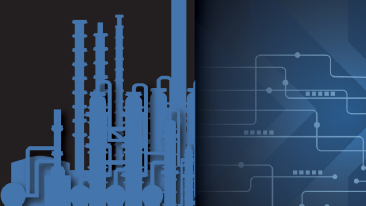My first job after college was working for an aerospace company. I was excited to be able to implement advanced digital control algorithms in software, but wasn’t prepared for the stiff resistance I would encounter. Most aerospace industry veterans thought that analog systems worked just fine—and more importantly, that they were very reliable and hardened. The industry was not poised to adopt readily available programming languages—such as “C”—which offered significant flexibility, but unbounded could lead to unfixable errors thousands of miles into space.
Until “going digital” became more widely accepted, the industry turned to a new, purpose-built and hardened programming language called “Ada” (after Ada Lovelace) with additional constructs and capabilities that made it ideal for embedded systems where safety and reliability were paramount. Digital would eventually win—just look at the dramatically different flight panels for the Dragon vs. Apollo spacecraft.
Artificial intelligence (AI) for the process industry is going through a similar transformation. Many AI algorithms and tools are readily available, but off-the-shelf AI tools are not typically suitable to use with process manufacturing’s critical systems. A new approach is required. Enter “Industrial AI.”
Purpose Built for the Process Industry, Industrial AI uniquely…
1. Applies the Basic Principles of Physics and Chemistry
For all the complexity of the process industry, from mega-refineries to petrochemical production, the basic behaviors are well understood. There are engineering fundamentals that govern how reactions transpire, and there are basic principles of mass balance that have to be met. These basic principles have enabled an ever-increasing and sophisticated set of models and control systems that customers have used to increase efficiency over the years across the entire value chain.
Industrial AI combines domain expertise and first principles-based models with artificial intelligence and analytics algorithms to deliver fit-for-purpose, domain-specific solutions. “Hybrid” models take into account existing chemical engineering rules as they are formed to ensure they can truly fit into the system. This alleviates the fear of the results being “unbounded” which was similar to the concerns about digital in the aerospace industry. In addition, embedded AI can significantly enhance the accuracy of existing models and approaches by tuning them with real-world data and experience. This approach is much more powerful than a generic AI approach.
As an example, in the process industry, polymer reactors are inherently complicated and difficult to model accurately. Hybrid models were effective in a difficult polymer production operating application, achieving much better results and economic benefit than any other method. The value of this approach is at least $1 million per line per year, solving previously unsolvable problems.
2. Scales Across the Enterprise
According to the AI: Built to Scale study by Accenture, 76% of executives in industrial organizations acknowledge they struggle to scale their AI strategy across the enterprise. Today, a key challenge for many Industrial organizations is the lack of a scalable data infrastructure to power Industrial AI models from training to productization. It is critical that any solution leverage data from across an organization, leverage IIoT connectivity, deliver analytics and clearly visualize impact. This often requires adeptly bridging across on-premise data and cloud capabilities.
As an example, in the process industry, an enterprise planning and scheduling solution leveraging AI and the cloud can enable faster review of planning scenarios and deliver improved analysis and decision-making. Hundreds of cases can be run in minutes to determine the best ways to increase margin.
3. Supports a Variety of Applications
In the process industry, a truly Industrial AI approach is capable of covering a wide range of use cases and applications, including virtual sensors, predictive models, reduced order models, simulated processes and equipment, predicting KPIs to evaluate quality, and predicting pollutants to reduce emissions and carbon footprint. This ensures that AI can be embedded in a pervasive fashion, with maximum utility.
There are many applications for unit- and equipment-level models, deployed online, to advise operators to improve operational yields, solve performance and safety problems and improve compliance. An example is a preheat heat exchanger train model to provide fouling and cleaning schedule advice, or to even make closed-loop decisions. Hybrid models can be easily developed, updated and run. Just the fouling monitoring use case can deliver tens of millions of dollars in value per year for a single heat exchanger train.
4. Accelerates Time to Value
Embedding AI enables users to accelerate the time to value by lowering the expertise barrier—customers don’t need an army of data scientists and/or process modeling experts. The application of AI is rapidly maturing, as Deloitte points out, “emerging tools and frameworks are helping to automate AI processes that previously required intensive efforts by AI specialists, such as machine learning model selection, configuration, tuning and deployment.”
Predictive and prescriptive maintenance technology with machine learning can identify precise failure patterns to predict equipment degradation weeks or even months in advance so action can be taken to avoid unplanned downtime and associated safety and environmental risks. The AI-based technology learns from existing design and operations data and then integrates process knowledge to deliver prescriptive maintenance solutions that learn very quickly and can be deployed rapidly by existing operational teams as opposed to data scientists.
As an example, a European polymer producer used an operational integrity model to prepare for outages in its production. By employing this model, the company gained 27 days advance failure warning of the hyper compressor in a low-density polyethylene (LDPE) unit. With so much lead time before the event, operators were able to build inventory in advance and prepare for necessary maintenance activity. The unit was then taken down before failure, thus avoiding a potential safety hazard and possible environmental release, while reducing the duration of the downtime.
5. Enhances Safety, Efficiency and Sustainability
Environmental regulations, energy and water conservation, air quality and climate change are prime concerns for industrial organizations, not to mention their customers and investors. In particular, the circular economy of plastics requires a “full-cycle” approach to production and extended use to conserve resources and protect the environment. With solutions that leverage insights enabled by AI and machine learning, companies can pursue sustainable energy projects such as bioethanol, biodiesel, solar and wind initiatives—giving them the ability to improve profitability and reliability while reducing capital investments.
There are many case studies from AspenTech customers that illustrate this, such as a Korean petrochemical and polymer producer that used modeling solutions to identify energy and emissions savings across their operations. Improved operations yielded savings of over $19M USD per year with a 12% reduction in energy use and carbon emissions, with the opportunity to achieve another 15% reduction in energy use in the future.
Applied Industrial AI can also support the development of carbon capture initiatives to mitigate climate change. With embedded AI modeling, applications can support design, validation and commercial scale-up of carbon capture technology with an approach that increases model accuracy, quality and performance across the entire industrial asset lifecycle.
Moving Forward with Industrial AI
AI, and Industrial AI, will continue to grow and become more pervasive in the process industry, with great potential. As Microsoft CEO Satya Nadella said, “AI is the defining technology of our time.”
With more process manufacturers exploring AI solutions, they may want to consider the above-mentioned criteria as part of their decision making to help them understand if their AI is Industrial or not.
For more AI-related blogs, visit https://www.aspentech.com/en/blog/AI.






Leave A Comment